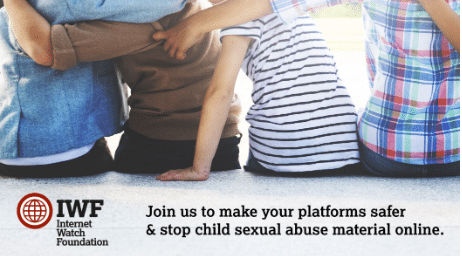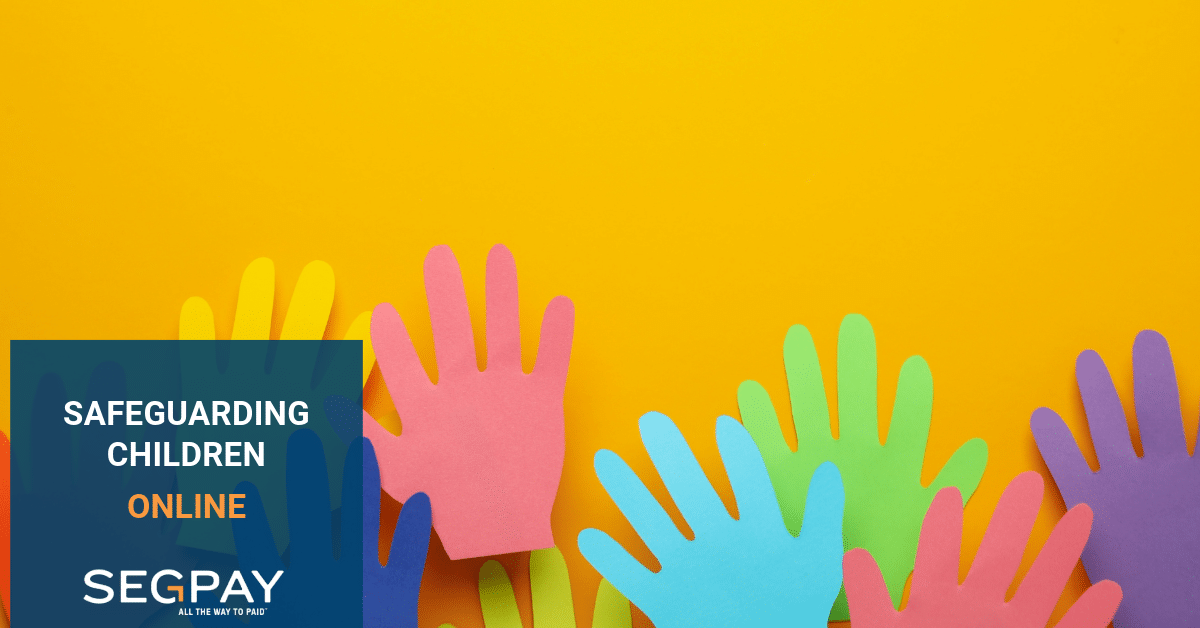- 5 minute read
In today’s digital age, the internet offers the world boundless opportunities for applications that improve education, provide entertainment, and facilitate accessible communication. However, the web also presents significant risks, especially to the most vulnerable members of society—children. The internet’s anonymity has become a breeding ground for illegal activities, including the distribution of child abuse material. To combat this plague, organizations like the Internet Watch Foundation (IWF) play a crucial role, while payment processors have a great responsibility in detecting and reporting child abuse. In this blog post, we will delve into the role of the IWF and what payment processors should do to help protect children online.
The Internet Watch Foundation: A Beacon of Light in the Fight against Child Abuse
The Internet Watch Foundation, established in 1996, is a non-profit organization dedicated to combatting the distribution of child sexual abuse content online. Based in the UK, the IWF works tirelessly to identify and remove illegal online content, offering a vital lifeline for children.

Its primary mission is to detect and report child sexual abuse material (CSAM) on the internet. Their team of experts utilizes innovative technology, artificial intelligence, and the support of tech companies and law enforcement agencies worldwide to identify and assess potentially illegal content. Once identified, the IWF takes immediate action to have the material removed, safeguarding potential victims.
In 2022, 375,230 reports were assessed by IWF, of which 255,588 reports contained child sexual abuse imagery, advertising, or linking to CSAM. IWF experts have reported a steep increase in reports of children being blackmailed into sharing sexual images of themselves by abusers, a practice also known as sextortion. In the first half of 2023, the IWF has received more reports of suspected sextortion cases than in 2022, and it has been able to act upon 257% more confirmed reports of criminal content than in 2022. A Survey by the Finnish human rights organization Protect Children found that one-third of those who view CSAM try to contact the abused children.

Detection often requires a lot of digging, research, and web analysis. For example, a visitor abuses a forum to upload CSAM images hosted on a different domain on an image hosting site. Beneath each image, a link is posted, which appears to contain the whole video. This link is hosted on yet another domain. Sex offenders continuously find sneaky ways to stay below the radar. Another concern is the end-to-end encryption (E2EE) introduced by social media and messaging platforms to enhance user privacy. Without putting the necessary child safety measures in place, E2EE could pose a serious risk as it creates an anonymous safe haven for child abusers.
Child exploitation knows no borders, which is why international cooperation is so important. The IWF works with hotlines and organizations across the globe, sharing information and expertise to combat the global distribution of CSAM. This collaborative approach ensures a more effective response to the ever-evolving threat of online child exploitation.
In addition to their proactive efforts to remove CSAM, the IWF raises public awareness about online child exploitation. By educating the public, parents, and caregivers about the risks children face online, they empower individuals to take a proactive role in protecting children from harm.
In 2020, the IWF started an interesting IWF Podcast “Pixels from a Crime Scene”.
Payment Processors: A Key Element in the Fight against Child Abuse
Payment Service Providers (PSPs) process digital transactions between consumers and merchants. They play a crucial role in e-commerce, and their services are crucial to a growing digital economy. However, with great power comes great responsibility, and PSPs must take steps to prevent their system from being abused to process transactions involving child abuse:
- Solid KYC (Know Your Customer) Procedures
Payment processors should establish stringent KYC procedures to verify the identity of their clients and customers. It is crucial to screen the type of business and the company structure and to identify the Ultimate Beneficiary Owner (UBO) before customer acceptance (onboarding). This helps to prevent financial crime, such as fraud and money laundering, but it also helps to prevent other criminal activities, such as child exploitation.
- Monitoring for Suspicious Transactions
Payment processors should implement advanced monitoring systems to detect and report suspicious transactions related to child exploitation. These systems can flag transactions involving websites or businesses suspected of hosting illegal content or engaging in illicit activities. Enhanced Due Diligence is critical to detect suspicious activity continuously after customer acceptance.
- Collaboration with Authorities
Collaboration with law enforcement agencies, card schemes, and organizations like the IWF is critical. PSPs should establish clear channels for reporting and sharing information about suspicious activities, ensuring that potential cases of child exploitation are swiftly investigated.
- Regular Training and Education
Payment processors should offer their employees, particularly their underwriters and risk professionals, regular training and education on how to recognize signs of child exploitation and how to report these cases. This training should be an integral part of their compliance and security protocols.
- Age Verification Solutions

By integrating age verification solutions in their payment process, PSPs help ensure that individuals attempting to access age-restricted content or services are of legal age. AI-powered age verification tools use advanced algorithms, biometrics and data analysis techniques to help prevent minors from accessing age-restricted content or services. These tools not only contribute to child protection efforts but also help online platforms and businesses comply with relevant laws and regulations governing age-restricted content and services.
- Web Crawling and Scraping Tools
- Collecting Data: Web crawling involves automated navigation through websites, following links, and collecting data from (hidden) web pages. Web scraping is a subset of web crawling. It extracts specific information from web pages. Organizations can use these techniques to systematically scan the internet for websites and content that may host child abuse material.
- Content Identification: Web scraping and crawling algorithms can be programmed to search for keywords, file names, or specific patterns associated with child abuse material. This enables the identification of potentially harmful content within the vast amount of data available online.
- Image and Video Analysis: Advanced image and video analysis techniques can be integrated into web scraping and crawling processes. These tools can help detect explicit or abusive imagery involving minors, even in cases where the content is not explicitly labeled as such.
- Metadata Analysis: Web scraping can extract metadata from online content, such as image EXIF data or video file information. Metadata can provide valuable insights, including timestamps, locations, and creator information, which may aid in identifying and tracking down individuals involved in child exploitation.
- Comparative Analysis: Web scraping and crawling allows organizations to compare collected data with known databases of illegal content. This comparative analysis can identify matches or similarities between online content and known instances of child abuse material, leading to quicker detection and removal.
- Deep and Dark Web Monitoring: Web scraping and crawling can extend into the dark web, where illegal activities are often perpetuated. These techniques can help law enforcement and child protection organizations discover hidden forums, websites, or marketplaces where child abuse material is being shared or sold.
- Real-time Alerts: Web scraping and crawling systems can be programmed to provide real-time alerts when potentially harmful content is detected. This enables swift action to report and remove such material, preventing further harm.
- User Behavior Analysis: Analyzing user behavior on websites that host or share child abuse material can be accomplished through web crawling. Patterns of user engagement or interactions can provide insights into how these websites operate and who might be involved.
- Evidence Collection: Web scraping and crawling can assist in the collection of digital evidence for legal proceedings. Timestamps, IP addresses, and other data collected during the process can be crucial in building cases against individuals or organizations involved in online child exploitation.
- Reporting Mechanisms: Organizations like the IWF can use the data collected through web crawling and scraping to report instances of child abuse material to relevant authorities, internet service providers, or hosting providers. This facilitates the removal of illegal content from the internet.
It is important to note that web crawling and scraping for the purpose of detecting online child abuse must be carried out within the bounds of applicable laws and regulations. Organizations involved in such activities must prioritize user privacy and data protection while ensuring the responsible and ethical use of these techniques in their efforts to protect children online.
Conclusion
The Internet Watch Foundation plays a pivotal role in the fight against child exploitation online, working diligently to detect and remove illegal content worldwide. However, the responsibility of protecting children from harm extends beyond organizations like the IWF. Payment processors have a moral duty to implement age verification solutions, stringent KYC procedures, and robust monitoring systems to prevent their platforms from being used for illegal activities such as child exploitation. By collaborating with authorities, providing regular training, and fostering a culture of reporting, payment processors can contribute to a safer online environment for children. By doing so, they can play a vital role in the collective effort to combat child exploitation and create a safer digital landscape for future generations.
Our mission with The IWF...
Segpay partners with IWF, because Segpay’s CEO, Cathy Beardsly, strongly believes in the work the IWF does each day as it monitors and investigates thousands of weekly reports to keep minors safe. Segpay is well aware of its responsibility in helping to detect child abuse. In her own words:”We are the watchdogs for the card brands and the acquirers”.
If this article has raised your awareness about this issue and made you curious about Segpay’s value-added-services, feel free to contact us
Via: [email protected]
This article has been written by @SandeCopywriter on behalf of SEGPAY Europe



